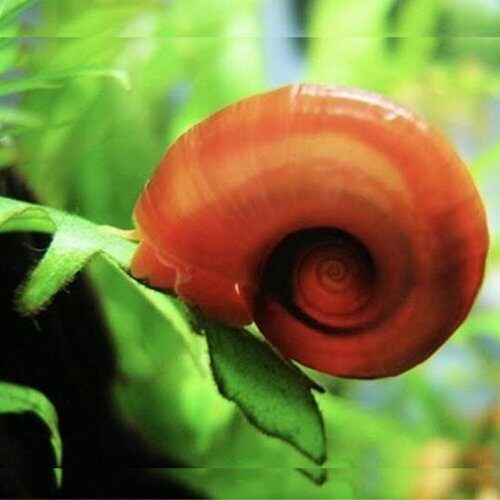Snails
Snails may move slowly, but they are always intriguing to watch since they are one of the species with the greatest ecological diversity on the world.
It is a member of the phylum Mollusca and may be found practically everywhere in the globe, from the tops of the world’s tallest mountains to the most basic botanical gardens to the most remote rock formations in the ocean. These creatures are often maintained as domesticated pets in some regions of the globe. If you need a name for your snail and are looking for some creative options, have a look at the following list of options.
The snail is easily identifiable by its distinctive shell. They differ from slugs and sea slugs, to which they are closely related, in just this one important respect: (although many slugs still have internal shell plates within their bodies). Snails are unable to live without their shells since the majority of their vital organs are contained inside them.
Here are five amazing facts about snails!
These creatures have eyes that are just partially developed and no ears at all. Instead, they engage with the world around them by using their sense of touch and their capacity to pick up on vibrations in the surroundings.
The fact that many animals are hermaphroditic—that is, they have both male and female reproductive organs—is undoubtedly one of the most peculiar aspects of the natural world. After mating, snails will bury their eggs in the dirt below them. These eggs won’t hatch for a few weeks, but how long it takes depends on the weather conditions. Because the young snails are so hungry, it is possible that they may swallow the unhatched eggs that were laid by their parents. During their development, they go through a process called torsion, in which their bulk is turned to one side. This results in the anus being situated quite near to the head of the animal.
Snails are able to endure the severe winter by drawing upon their stored fat stores. They begin by excavating a tiny hole in the ground, then they withdraw inside their shells, and lastly, they close up the entrance to their shells so that any possible predators cannot enter. This provides numerous layers of protection for their vulnerable bodies while they are dormant. The state that results from entering hibernation is referred to as estivation. It is also known as the summer sleep, although it is not the same as the sleep that snails have on a regular basis.
While some aquatic snails, such as the nerites, only have gills for breathing underwater, others have both lungs and gills in their bodies. The breathing tube of an apple snail is so long that it may reach the surface of the water.
Sea snails have a natural adhesive that enables them to attach themselves to rocks and prevents them from being washed away by waves. As a result of this, a number of researchers have been motivated to create an experimental medical adhesive with the goal of mending heart abnormalities.
The Species, Types, and Their Scientific Names for Snails
The snail is referred to by its scientific name, Gastropoda. This originates from two Greek words that signify “stomach” and “foot,” respectively. The scientific term alludes to the location of the foot, which is below the abdomen. Mollusca, which includes gastropods, is the phylum that they belong to. They make up the most numerous class within the phylum and are considered to be the most diverse. There are around 85,000 or more species of gastropods in the globe, although only about 24,000 of those species have been subjected to categorization thus far. These may be broken down into a few different categories in general:
Land Snails are the most well-known and are the ones that are most prone to interact with humans. The vast majority of land snails are classified under the subclass of Heterobranchia, which also includes slugs.
Snails found in Freshwater – The primary habitats of freshwater animals are water bodies such as rivers, lakes, and streams. These habitats are home to hundreds of unique species, such as apple snails and nerites.
Marine Snails – The vast majority of gastropods, despite their reputation for being elusive and difficult to see, live in the depths of the ocean and in the waters immediately next to the beaches, creating a whole world under the waves that is inaccessible to humans. There are a few other classifications for marine gastropods, such as the Vetigastropoda and the Caenogastropoda. Sea snails fall under both of these categories.
Snail Identification Based on Their Outward Appearance
Although most people are acquainted with the common garden snail, the class of gastropods as a whole encompasses a huge variety of organisms with quite distinct looks and structures. The traits of apple snails, nerites, ramshorn snails, and any other kind of snail are entirely their own. Only the insect class has a greater variety of species than gastropods do, hence they are in second place. But snails are not the same thing as insects. The bodies of most snails are soft and tubular in form; they have a muscled foot for mobility; one or more pairs of tentacles emerge from the head; and they have tiny eyes either at the top or the bottom of the main stalks.
The spiral shell is the most obvious characteristic that all species have in common with one another. Since it includes the majority of the snail’s internal organs, it is not possible to remove it without first causing the snail’s death since it is directly related to the body.
-
Combo Packs
Assasin Snail (3 nos)
Original price was: ₹599.00.₹349.00Current price is: ₹349.00. Add to cartBlack and White Combination on the shell
-
Combo Packs
Golden Yellow Apple Snail (10 …
Original price was: ₹259.00.₹199.00Current price is: ₹199.00. Add to cartGolden yellow Coloured Shell like Apple shape
-
Combo Packs
Hair Thorn Nerite Snail (3 nos…
Original price was: ₹999.00.₹699.00Current price is: ₹699.00. Add to cart3 nos Rare Snail Variety
-
Combo Packs
Horned Nerite Snail (3 nos)
Original price was: ₹1,299.00.₹699.00Current price is: ₹699.00. Add to cartHighlighted Snail with a Horn like part
-
Combo Packs
Malaysian Trumpet Snail (5 nos…
Original price was: ₹399.00.₹219.00Current price is: ₹219.00. Add to cartmalaysian Borned Snail using as Cleaning purpose
-
Combo Packs
Military Helmet Snail (5 nos)
Original price was: ₹1,399.00.₹899.00Current price is: ₹899.00. Add to cartRare Variety Species of Snail
-
Combo Packs
Red Lips Nerite Snail (5 nos)
Original price was: ₹1,399.00.₹899.00Current price is: ₹899.00. Add to cartunique nerite species that is native to Indonesia andhighly variable shell patterns and coloration.
-
Combo Packs
Red Ramshorn Snail(5 nos)
Original price was: ₹399.00.₹199.00Current price is: ₹199.00. Add to cartRamshorn snail as Red Colour
-
Combo Packs
Spotted Nerite Snail (3 nos)
Original price was: ₹799.00.₹449.00Current price is: ₹449.00. Add to cartDark Red, Yellow and brown combination with Black Spot
-
Combo Packs
Zebra Nerite Snail (3 nos)
Original price was: ₹799.00.₹449.00Current price is: ₹449.00. Add to cartSnail with Zebra Lined on the shell
Snails may move slowly, but they are always intriguing to watch since they are one of the species with the greatest ecological diversity on the world.
It is a member of the phylum Mollusca and may be found practically everywhere in the globe, from the tops of the world’s tallest mountains to the most basic botanical gardens to the most remote rock formations in the ocean. These creatures are often maintained as domesticated pets in some regions of the globe. If you need a name for your snail and are looking for some creative options, have a look at the following list of options.
The snail is easily identifiable by its distinctive shell. They differ from slugs and sea slugs, to which they are closely related, in just this one important respect: (although many slugs still have internal shell plates within their bodies). Snails are unable to live without their shells since the majority of their vital organs are contained inside them.
Here are five amazing facts about snails!
These creatures have eyes that are just partially developed and no ears at all. Instead, they engage with the world around them by using their sense of touch and their capacity to pick up on vibrations in the surroundings.
The fact that many animals are hermaphroditic—that is, they have both male and female reproductive organs—is undoubtedly one of the most peculiar aspects of the natural world. After mating, snails will bury their eggs in the dirt below them. These eggs won’t hatch for a few weeks, but how long it takes depends on the weather conditions. Because the young snails are so hungry, it is possible that they may swallow the unhatched eggs that were laid by their parents. During their development, they go through a process called torsion, in which their bulk is turned to one side. This results in the anus being situated quite near to the head of the animal.
Snails are able to endure the severe winter by drawing upon their stored fat stores. They begin by excavating a tiny hole in the ground, then they withdraw inside their shells, and lastly, they close up the entrance to their shells so that any possible predators cannot enter. This provides numerous layers of protection for their vulnerable bodies while they are dormant. The state that results from entering hibernation is referred to as estivation. It is also known as the summer sleep, although it is not the same as the sleep that snails have on a regular basis.
While some aquatic snails, such as the nerites, only have gills for breathing underwater, others have both lungs and gills in their bodies. The breathing tube of an apple snail is so long that it may reach the surface of the water.
Sea snails have a natural adhesive that enables them to attach themselves to rocks and prevents them from being washed away by waves. As a result of this, a number of researchers have been motivated to create an experimental medical adhesive with the goal of mending heart abnormalities.
The Species, Types, and Their Scientific Names for Snails
The snail is referred to by its scientific name, Gastropoda. This originates from two Greek words that signify “stomach” and “foot,” respectively. The scientific term alludes to the location of the foot, which is below the abdomen. Mollusca, which includes gastropods, is the phylum that they belong to. They make up the most numerous class within the phylum and are considered to be the most diverse. There are around 85,000 or more species of gastropods in the globe, although only about 24,000 of those species have been subjected to categorization thus far. These may be broken down into a few different categories in general:
Land Snails are the most well-known and are the ones that are most prone to interact with humans. The vast majority of land snails are classified under the subclass of Heterobranchia, which also includes slugs.
Snails found in Freshwater – The primary habitats of freshwater animals are water bodies such as rivers, lakes, and streams. These habitats are home to hundreds of unique species, such as apple snails and nerites.
Marine Snails – The vast majority of gastropods, despite their reputation for being elusive and difficult to see, live in the depths of the ocean and in the waters immediately next to the beaches, creating a whole world under the waves that is inaccessible to humans. There are a few other classifications for marine gastropods, such as the Vetigastropoda and the Caenogastropoda. Sea snails fall under both of these categories.
Snail Identification Based on Their Outward Appearance
Although most people are acquainted with the common garden snail, the class of gastropods as a whole encompasses a huge variety of organisms with quite distinct looks and structures. The traits of apple snails, nerites, ramshorn snails, and any other kind of snail are entirely their own. Only the insect class has a greater variety of species than gastropods do, hence they are in second place. But snails are not the same thing as insects. The bodies of most snails are soft and tubular in form; they have a muscled foot for mobility; one or more pairs of tentacles emerge from the head; and they have tiny eyes either at the top or the bottom of the main stalks.
The spiral shell is the most obvious characteristic that all species have in common with one another. Since it includes the majority of the snail’s internal organs, it is not possible to remove it without first causing the snail’s death since it is directly related to the body.











